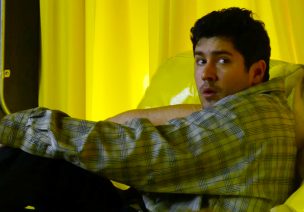The Gary Plays 2017
Reviews
Paul Myrvold's Theatre Notes
The word epic is so misused. It can be applied to, for instance, a migraine headache, or the feat of eating the most hot dogs in a competition at the county fair. Epic originally meant a long heroic poem, told in elevated style, The Iliad, for example. But epic has also been used to describe other works of art; Bertoldt Brecht wrote some epic plays. So, for our theatrical purposes here, let’s define epic as a work of unusual scope and length that deals with serious matters of great import. Certainly, Shakespeare’s cycle of plays about the House of Lancaster (Henry the Fourth Parts I and II; Henry the Fifth) can be called epic. Wagner’s Der Ring des Nibelungen is a monumental work, a cycle of four lengthy operas usually performed in four days.
Peter Brook’s 1985 adaptation of the Sanskrit epic, the Mahabharata, was first performed in French in a quarry outside of Avignon. The performance consisted of three parts, which took nine hours, eleven counting the breaks. In 1987, Brook later translated it in to English for a performance produced in Zurich. The only other production I know of that took a whole day to experience is The Western Stage’s extraordinarily fine production, East of Eden. Adapted by Alan Cook, the Steinbeck masterpiece was crafted into three three-act plays. They could be seen in three consecutive evenings or in one day—morning, afternoon and night. It is to this day the greatest piece of theatre I have ever seen.
With this lengthy introduction, I mean to place playwright Murray Mednick’s magnum opus, The Gary Plays, in appropriate context. The Gary Plays are not as sweeping in scope or performance as the Mahabharata or East of Eden. Mednick’s script consists of three parts, each with two distinct plays. Part I—Tirade for Three introduces a man named Gary (Jeff LeBeau), a middle-aged, out-of-work actor mired in an existential crisis. Goaded by a chorus consisting of a sympathetic man (Derek Manson), and a harsh, acerbic woman, (Amanda Weier), Gray spews venom and angst. Essentially components of his subconscious, the two badger, cajole and, rarely, encourage Gary, for whom life is the shits. He hasn’t had a job in a year and his agent says nobody knows him. He carries a lot more of life’s woes, but the key to it all is the death of his troubled, beloved son, shot down by nobody knows who for a reason nobody knows why. The style of this very short play is presentational, visually sparse, and performed with minimal movement in ten extremely short “acts.” It is a curtain raiser, immediately followed by Girl on a Bed.
Girl on a Bed opens up the action, and the style of acting shifts to something more realistic, much of it conceived as takes in the continuing movie that is Gary’s life. Scenes are announced by the chorus in script terms such as “EXTERIOR— STREET—DAY.” The chorus is still there weighing in when necessary, but other characters are autonomous, and not necessarily a product of Gary’s mind. The style is episodic, with characters revealed in shifts of time backward and forward. It gives nothing away to say that the audience sees the girl in the title, Laura (Laura Liguori), for the first time as she lays dead on a makeshift gurney representing a bed. Laura, as revealed in subsequent scenes, is a smart, beautiful girl of seventeen who lives in a home from hell with a harridan mother, Monica (Barbara Schofield), and a feckless father, Charles (Carl J. Johnson). Told so often that she is worthless and has no future, she becomes convinced of it. No one can help her; not the school counselor, Mrs. Williams (Peggy Ann Blow) nor her best friend, Rena (Sandra Kate Burck). She falls into the bad company of career junkie, Rondell (Phillip C. Curry), and that of a slick, well dressed, Latino named Antonio (Peggy Ann Blow), who is death incarnate. Antonio exploits her beauty in the worst of ways, confirming her own sense of worthlessness.
Laura’s connection to Gary and to Gary’s son, Danny (Josh Trant) occurs outside an AA meeting where Danny is struck by her beauty. As the action shifts back into Gary’s consciousness, the audience is introduced to his bitter, first wife, Gloria (Laura Richardson), and also to his impatient, had-it-up-to-here second wife, Marcia (Ms. Weier).
Directed with a sure hand by Guy Zimmerman, the cast, headed by the excellent Jeff LeBeau, is uniformly superb, each character rendered in rich, nuanced detail.
Produced by Open Fist Theatre Company, the show is handsomely mounted with a minimalist, open-stage set by scenic designer Jeff Rack, lit with great subtly by lighting designer Dan Reed, and enhanced by the superb projections designed by Hana S. Kim. The extraordinary sound design by John Zalewski underscores the entire play, often with such extreme subtly that it is almost subliminal. Costumes by designer Kharen Zeunert fully support characters and action.
The Gary Plays, crafted and refined over decades by Murray Mednick, with the participation of many collaborators, is, judging by Part I, an undeniable accomplishment.
This is a triumph in all its aspects, drama at its finest. But, some might whine, it is such a downer; it is so resolutely grim. To those I say, there is plenty of wry humor, and besides, Oedipus is comedy? Long Day’s Journey into Night is a laugh fest? Hamlet is fun?
Time is short and these comments are late. See this production before it is gone. It runs for two more weeks. Parts I, II, and III can be seen on Thursdays, Fridays and Saturdays, respectively, and the entire cycle on Sundays at 12 noon, 3pm and 7pm. at Atwater Village Theatre, 3269 Casitas Avenue in Los Angeles.
____________________________________________________
Carol Edger Germain, Colorado Boulevard.net
“The Gary Plays” follow Gary through six periods in his life, all following the random murder of his son. Each of the three parts of this series has two plays, and each of the six plays stands on its own. I saw Part III, “DaddyO Dies Well” and “Charles’ Story,” and am hoping to take the last chance this Thursday, Friday, and Saturday to see Parts I and II. Any one of the two-play parts will be satisfying on its own, you will not miss anything if you can’t make all three parts.
In “DaddyO Dies Well,” Gary and Gloria (Gary’s ex-wife and the mother of Danny, their murdered son), finally purge the ghosts of their past, somewhat, and come to terms with the tragedy via an ayahuasca ceremony – an herbal drug induced journey for the soul (which ironically I had just learned about on an episode of Law&Order Special Victims Unit the day before). Daddy0 was a larger than life, perfectly unhinged leader of the ceremony, bringing some comedy as well as intense emotion and introspection for Gary and Gloria, fascinating to watch. The final play of the series, “Charles’ Story,” finds Gary using his acting skills as a performance therapist at a rehab center in Malibu, where he encounters his ex-agent as well as a father dealing with the death of his daughter Laura (who was introduced in one of the earlier plays in the series). You can feel that Gary is still tethered to his sorrow to a certain extent but see him progress to a point where he can help others heal by drawing on his past and coordinating what he has learned with what his patients need.
Again, another excellent acting company, Open Fist Theatre Company, graces a stage at Atwater Village Theatre with tight acting, directing, writing, and production.
____________________________________________________
Martin Hernandez, Stage Raw
Playwright Murray Mednick’s The Gary Plays are a set of six one-act works that depict the travails of unemployed actor Gary Bean following the random killing of his adult child. While Mednick’s plays, which lean towards abstruse, non-linear and lyrically dense storytelling, aren’t everyone’s cup of tea, they can also be intriguing, heartbreaking and uplifting, and for the most part this was the case with the two I attended.
DaddyO Dies Well is a recondite tale in which Gary (Kelly Van Kirk), plagued by guilt since his son’s death, is summoned by his dying “hipster” stepfather DaddyO (Roderick Menzies). Sitting king-like on a raised platform, while characters from Gary’s past surround him, the loving DaddyO pontificates on his stepson’s plight and his own mortality, and extends a purgative tea to Gary, who soon engages in dreamlike parlays with the others on stage. Ex-wife Gloria (Laura Richardson) heart-wrenchingly confronts Gary, faulting him for their son’s death, while others — like his deceased mother (Elizabeth Lande) — directly address the audience, thus heightening Gary’s alienation.
More accessible is Charles’ Story, which is set in a ritzy rehab center in Malibu and features a more upbeat Gary (Darrell Larson) now a part time “performance therapist.” He runs into Todd (Norbert Weisser), an alcoholic movie producer from his past, and bonds with Charles (Carl J. Johnson), a milquetoast accountant whose own child has died tragically. Todd masks his vulnerability with cynicism, sparring with his therapy group (Amanda Weier, Laura Liguori and Derek Manson), while also dodging Antonio (Peggy Ann Blow), a mysterious gardener whom he thinks is an assassin out to get him. When a firestorm threatens the center, Todd and Charles each embrace the inferno to burn off their sins, with Charles attempting a bittersweet reconciliation with his reluctant and self-absorbed wife (Barbara Schofield).
Director Guy Zimmerman’s perceptive staging and the ensemble’s timing and dedication to Mednick’s text help to redeem the evening when things do bog down, while Jeff G. Rack’s set and Hana S. Kim’s video projections add an effectively surreal quality to DaddyO’s trailer park and the Malibu rehab.
____________________________________________________
Sheehan, On Stage Los Angeles
These lengthy and very involved plays by Murray Mednick are worthy of a scholarly approach with attention to their inspiration. I can highly recommend each one,
but also recommend that seeing all three in one day will be overwhelming and exhausting. Mednick’s writing smacks of the scholar that he most certainly is and the issues he embraces in such a way as to gather the audience in and then wrap them in an enigma that.. perhaps….. taken in smaller bites might be better served.
A Sunday marathon starting at noon at the Atwater Village Theater currently occupied by the Open Fist Theatre Company and running helter skelter through the afternoon and with a dinner break then starting again at seven until almost ten is a lot to absorb. So.. taking full responsibility for my own actions, nodding from time to time, it’s important to understand that if you adore challenging theatre, crisp and well defined direction, spot on characters presented by professional actors with amazing special effects, check the schedule and plan a well paced visit to see all three of The Gary Plays.
Based on a true story that happened to an actor friend of Mednick’s, the character Gary, played in the trilogy’s first iteration by Jeff LeBeau, whose dedication to the role exceeds whatever excellent might be.. Gary: the actor.. is faced with multiple challenges that stem from the murder of his young son, Danny (also excellent Josh Trant) and his relationship with his ex-wife, Danny's mother (Laura Richardson) and their interaction forward and back in time. This includes another family whose pathway crosses Gary’s: Monica (Barbara Schofield) and Charles (Carl J. Johnson) and their hypersexy independent teen Laura (Laura Liguori). The abstract and dream like quality of each of the three plays continues, not always in a linear fashion, making the narrative only a suggestion that may or may not be apparent to the audience. A curtain speech allows that each of the three plays stands pretty much on its own, but to approach the material from anywhere but the beginning, it seems to me, would be cheating the playwright and the playgoer. Even with side trips and obscurities, there is a whole picture and there lies the story.
To discuss the entire idea would be a long essay in and of itself. The best thing to be said about these three plays is that Guy Zimmerman’s direction supplemented by extraordinary scenic projections by Hana S. Kim, is a dance well choreographed. It’s more than just strong stage pictures. It’s individual actors dedicated to the stories with skills that remind me of the work exhibited by Joseph Chaikin’s Open Theatre in the heyday of experiment and strong statements on stage. The Gary Plays are more intellectual than visceral.
Each of the three plays is made up of two sections:
Part I: Tirade for Three / Girl on a Bed;
Part II Gary’s Walk / Out of the Blue and
Part III DaddyO Dies Well / Charles’ Story. Each is divided into smaller ‘acts’ that are sometimes announced by Chorus (Amanda Weier and Derek Manson who double as other characters in all three parts). To spare the use of the term ‘excellent’
to describe director Zimmerman’s work with all of the cast members.. let it be said in no uncertain terms that his direction and the actors’ work is exemplary: completely dedicated to the Three Parts.
Expanding the Story of Gary, played in Part I by Jeff LeBeau, Part II: Kelly Van Kirk and Part III: Darrell Larson, we learn of the devastating effect of the loss of Gary’s son, Danny (Josh Trant) : a troubled kid who pals around with an addict/Vietnam vet, Rondell (Phillip C. Curry, whose basso profundo vibrates the theater!). Danny was murdered in a park, apparently, at random.
Telling the basic story of The Gary Plays in one fell swoop can never do justice to Mednick’s efforts. That said, throughout the three parts, the ensemble efforts of the entire team bring us a day long examination of difficult times with an underlying theme, perhaps, that “Money is more important than people!” Mendick’s characters flow flawlessly through the trials and tribulations of parenting, addiction, divorce, angst, self doubt, revenge, seeking refuge and therapy finding solace? as well as the on going question that we all ask about life and death. Is the end, the end?
Flash and evil Antonio (Peggy Ann Blow!) doubles as a well meaning high school counselor. In Gary’s Walk, timing with beautiful projections works wonderfully. Long diatribes by hipster DaddyO (Roderick Menzies) in Out of the Blue conducts Gary (Van Kirk) through a barfing personal search with a guided Ayahuasca ceremony (peyote!) with Mama Bean (Elizabeth Lande) holding court. The trilogy twists forward to Charles’ Story where we find Gary (Larson), now a “performance artist employee” of a fancy Malibu rehab center. Here, movie producer Todd (Norbert Weisser) conducts business after his third (or so..) detox who mind dances with group therapy. As the Malibu fire advances toward the blue Pacific (where Gary has longed to deposit the ashes of his dead son in the former piece).. we find that Charles emerges as the one who has more than likely overcome his issues with his wife and the death of his daughter. Fling into the mix references to Greek mythology’s Trojan Wars, Agamemnon and Clytemnestra, the scholarship of this trilogy of plays takes on epic proportions.
As I sometimes say, this is not for the feint of heart.. or the faint of heart and that one hopes that the experience of these plays informs the serious playgoer. Anyone looking for a quick theatre fix is better directed to any of the ongoing shows that feature an easy two or three hours that won’t make them do much work to be informed or entertained. Not that there’s anything wrong with that!
That said, Highly recommended for the patient folks who support challenging theatre. Start with Part I.
____________________________________________________
Anthony Byrnes, KCRW
If you're a lover of muscular playwriting, great acting and Los Angeles - you need to spend next Sunday with Murray Mednick.
Well not with Mr. Mednick himself but his remarkable 6 play cycle "The Gary Plays."
Open Fist Theatre Company has teamed up with Mr. Mednick and director Guy Zimmerman to bring all 6 plays to the stage. So you’re seeing 6 plays in a single day. It’s a Los Angeles marathon of sorts.
The Gary of the plays is Gary Bean and as many have noted he's a sort of Los Angeles everyman: he's an out of work actor. What could be more fitting for a play about LA? The central crisis that haunts Gary is the death of his son Danny Boy. Danny was killed somewhat mysteriously and despite being something of an addict and mostly homeless himself - Gary is committed to avenging his death.
That proves to not be quite as easy as it might seem. Along the way Gary has to contend with the voices in his head, ex-wives, junkies, a dying mother, the angel of death, and more than a couple existential and philosophical crisis. All of this is brought to life through the vivid, aggressive language of Mr. Mednick.
Mr. Mednick is something of perennial ur-playwright of Los Angeles. While he traces his roots back to New York and his fellow playwrights Sam Shepard and Maria Irene Fornes, it's in Los Angeles with his Padua Playwrights that Mr. Mednick has made his mark.
You can recognize a Mednick play almost instantly through not only it's daring use of language but also through the visceral acting. Mr. Mednick's words attract great actors, not pretty-boy showcase actors here to make their big break - but quirky actors, actors who have secrets, actors you might choose avoid late at night in a dark alley. This Open Fist production is no exception - it's been wonderfully cast.
What's extraordinary about the Open Fist productions is the design work. Usually Mr. Mednick's plays survive on words and acting alone. That's enough. But here the productions are surrounded by a remarkable score, courtesy of designer John Zalewski, and an almost constant videoscape by projection designer Hana S. Kim. They provide more than just a backdrop for Gary's journey through the city but also a remarkable restrained but powerful visual world that echoes without overpowering Mr. Mednick's words.
"The Gary Plays" are not for the faint of heart. If you see them in a single day, as you can next Sunday, you're committing to spending a day inside a playwright’s troubled mind; experiencing the ideas and characters as they eddy and flow through his consciousness. At the end of it you'll have a sense of Mr. Mednick's gifts and also a sense for what it means to think and write about Los Angeles. You might feel what it would be like to walk from the Valley to the sea or to wake up thinking of Kant or Buber after sleeping under the 405.
That's not a theatrical experience for everyone but if you feel it's tug - don't miss this chance to see a body of work that truly is the product of Los Angeles in all it's glory and flaws.
____________________________________________________
Dale Reynolds, Edge Media Network
Given the chance to be introduced to the work of playwright Murray Mednick was an exciting invitation not to be missed.
He was long known to theater mavens as one of the founders of the Padua Hills Playwrights Workshop/Festival and honored for his early Off-Off Broadway works.
This month, the adventurous Open Fist Theatre Company took six of the eight of his "The Gary Plays," and,
under the intelligent and exacting direction of Guy Zimmerman, illustrated Mednick's poetic bent, taking dialogue which is day-to-day common and making them, within a iambic pentameter rhythm, exhilarating and meaningful.
The six plays were broken up into three nights: First set: "Tirade for Three," the shortest segment, followed by a full-length, "Girl on a Bed." Second set: "Gary's Walk" and "Out of the Blue." Third set: "DaddyO Dies Well," and "Charles' Story." The six plays deal with one man's anguish: an unemployed actor, Gary Bean, who is going through economic and spiritual distress as his son has just been murdered in a random gang slaying in MacArthur Park, west of downtown Los Angeles, and our Gary is totally lost.
This everyman and anti-hero is then thrust into a noirish mythic experience, fully accessible to us. His anguish easily becomes our anguish, watching him, for instance, walk the 16 miles to Venice Beach to scatter the lad's ashes with two friends. We meet his current and ex-wives, a scuzzy dope dealer Antonio (played gloriously by Peggy Ann Blow), his dying father and liberated mother, and a wide variety of people he has to endure and interact with.
Gary (played by three actors: Jeff LeBeau, Kelly Van Kirk, and Darrell Larson) is experiencing an essential distillation of the meaning of tragedy, by having to come to terms with the senseless death of his son, of his fading career, and his inability to accept or give meaning to his two marriages, past and present.
This is extraordinary and epic theater, seeing the six plays over those three nights (or in an all afternoon/evening event) with a thoroughly professional and talented cast of sixteen.
Every single actor was spot-on in his or her characterization, with exceptional performances by LeBeau, Derek Manson in four different roles, Blow as the Latino doper, Barbara Shofield as a wife, Roderick Menzies as a vibrant and unhinged DaddyO, and a robust Norbert Weisser, aided by the excellent work of Laura Liguari, Laura Richardson, Josh Trant, Van Kirk, Larson, Elizabeth Lande, Phillip C. Curry, Carl J. Johnson, and Amanda Weier. Each and every one of them giving gem-like performances, well-cut and sparkly.
Jeff G. Rack's scenic design was simple and effective, especially when backed by Hana S. Kim's beautiful projection design and Dan Reed's lighting plot.
This was exhilarating theater, an example of the kind of quality theater in danger of being left behind by Actors' Equity's boorish behavior in financially limiting what smaller theaters can afford to do here in this astonishing theater town.
Open Fist, under the leadership of co-producer Martha Demson, is clearly one of the best companies in town and I, for one, wish to see their future work.
"The Gary Plays" perform through June 10 at the Atwater Village Theatre, 3269 Casitas, Los Angeles, 90039. For tickets and information, call 323-882-6912 or visit www.openfist.org.
____________________________________________________












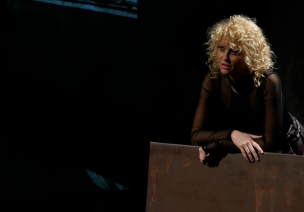












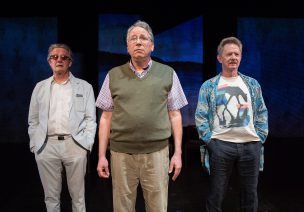
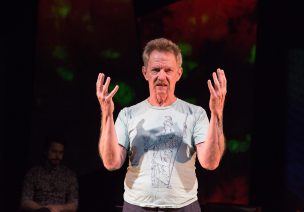

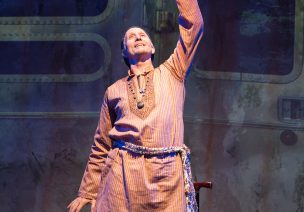








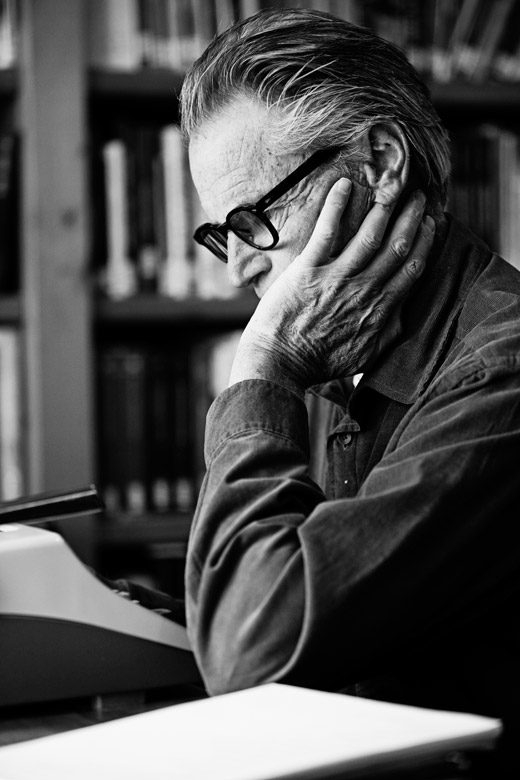
 Padua Playwrights invites you to join in a heartfelt tribute to the brilliant Sam Shepard.
Padua Playwrights invites you to join in a heartfelt tribute to the brilliant Sam Shepard.


